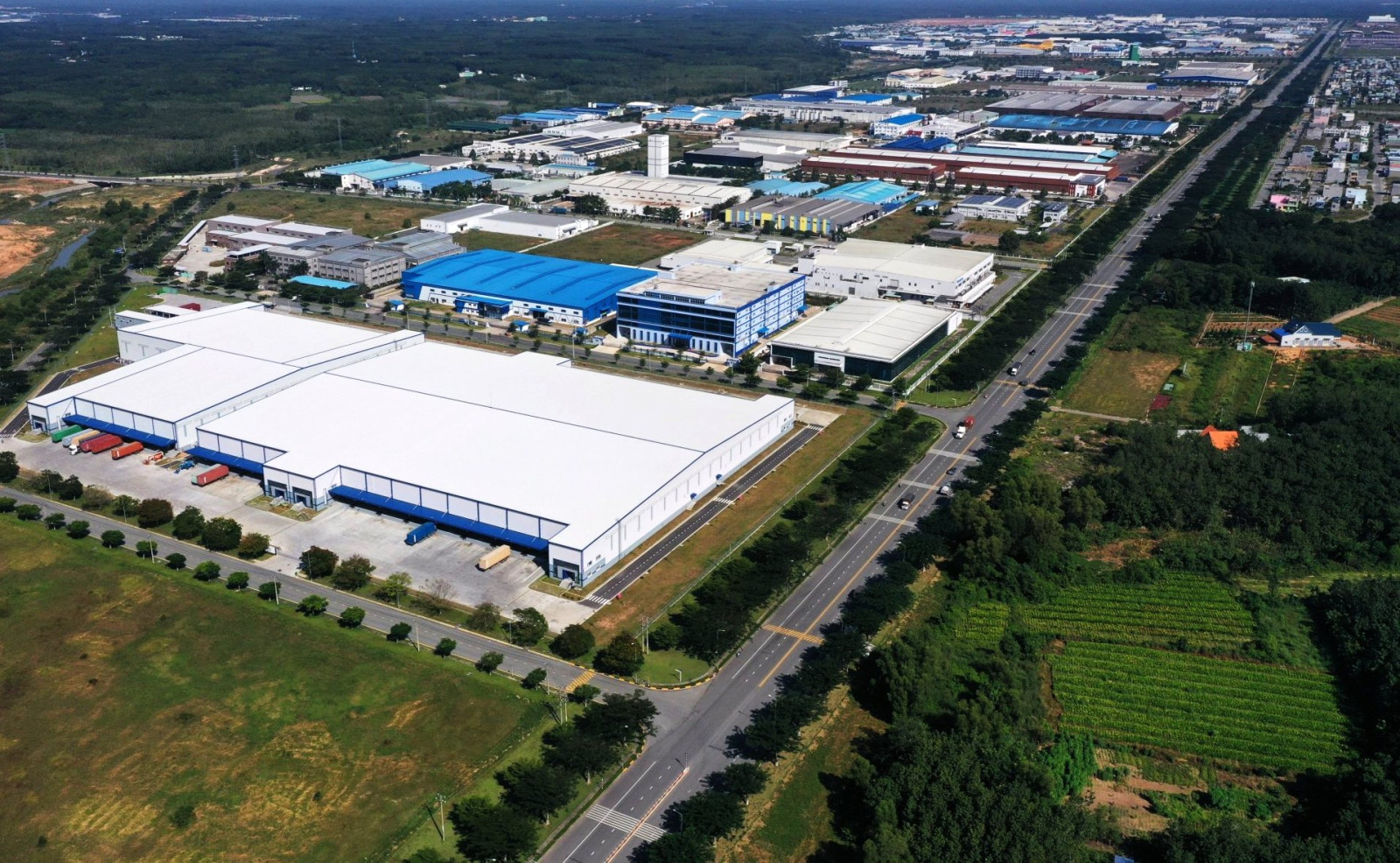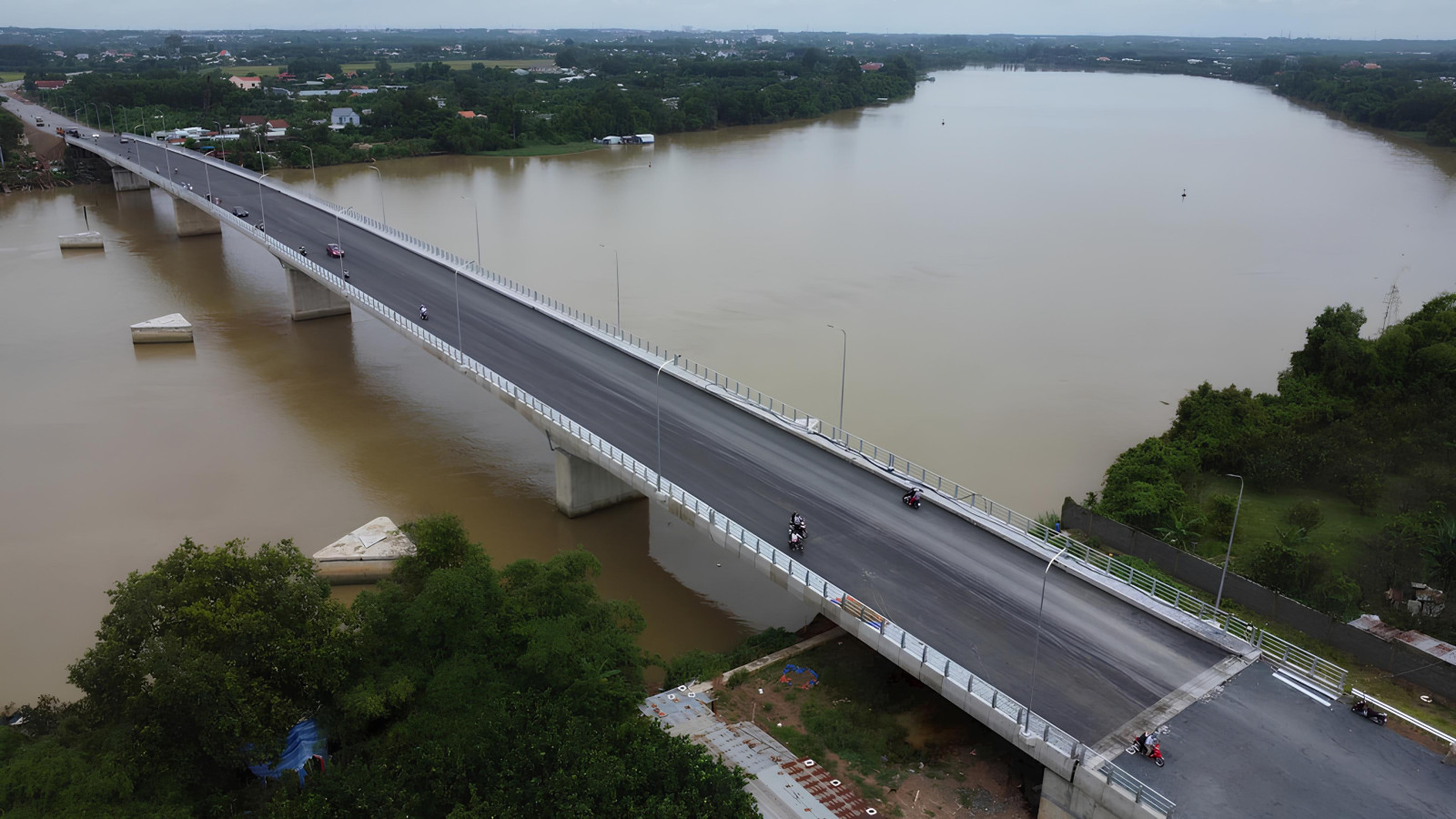Báo Bình Dương điện tử - www.baobinhduong.vn
Tổng Biên tập: LÊ MINH TÙNG
Phó Tổng Biên tập: HUỲNH MINH DÂN - NGUYỄN QUỐC LIÊM
To address the challenges of development in the new phase, Binh Duong is making extensive efforts to implement breakthrough solutions in line with provincial planning for 2021-2030, with a vision towards 2050.
Ongoing challenges
Thanks to policies “rolling out flower mats to call for foreign investors”, Binh Duong has become an attractive destination for international companies such as Nike, Adidas, P&G, Unilever… As of early October 2024, the province has absorbed 4,345 foreign direct investment (FDI) projects with total registered capital of US$41.8 billion. Along with FDI capital, domestic investment capital is also constantly increasing in the number of projects and scale. Up to now, the whole province has lured over 71,500 domestic investment projects with over VND 783,000 billion, greatly contributing to Binh Duong's development.

Binh Duong continues modernizing its existing industries, with focus on developing high-tech industries…In picture: Bau Bang Industrial Park
These investment flows have helped Binh Duong maintain a high average economic growth rate of 10.86% annually since 1997. The province’s economy has expanded to VND 486,400 billion, more than 120 times than its 1997 level, establishing Binh Duong as an industrial hub in Vietnam.
However, the development process of Binh Duong is also facing numerous challenges. The first challenge lies in the traffic sector. In reality, Binh Duong plays a crucial role in the transportation of goods across the southern region. With its advantageous geographical location, near Ho Chi Minh city, Binh Duong easily connects with the southeastern provinces and the Central Highlands through National Highway 13, My Phuoc - Tan Van Road and many other routes. However, the increasing volume of vehicles passing through the province has led to congestion and overload on key roads such as My Phuoc - Tan Van, Huynh Van Cu at the section of Phu Cuong bridge, National Highway 13, especially during peak hours. Additionally, Binh Duong is also facing the middle-income trap. Along with that, the increase in mechanical population growth has made the province face several social challenges…
Infrastructure development with regional connectivity promoted
Binh Duong is making great efforts to accelerate the implementation of key traffic projects such as belt road 3, belt road 4 of Ho Chi Minh city, the Ho Chi Minh road with the section passing through the province, the expansion of National Highway 13... Additionally, Binh Duong has recently inaugurated and put North Tan Uyen - Phu Giao - Bau Bang arterial road, Bach Dang 2 bridge connecting Dong Nai into use, with the goal of expanding development space and enhancing Bình Dương's connectivity with the Southeastern region. During the 2024-2030 period, Binh Duong will continue implementing overpass and underpass projects at key intersections such as the Phuoc Kien underpass project with total investment of VND 1.05 trillion from provincial State budget. This intersection connects four main roads, including National Highway 13, Pham Ngoc Thach, Huynh Van Cu and Nguyen Van Tiet, helping reduce traffic congestion on these routes.

Bach Dang bridge 2 has just been completed and put into use, helping strengthen connection between Binh Duong and the Southeastern region
Regarding the railway system, Binh Duong is planning the Di An - Bau Bang - Loc Ninh railway, which will connect to Cambodia, the Di An - Bien Hoa - Vung Tau route connecting to the Cai Mep - Thi Vai port and Di An - Can Tho route to expand connections with the Mekong Delta provinces. The Song Than - Di An station is also being planned for expansion from 60 hectares to 200 hectares and has already organized international intermodal transport routes, providing great convenience for businesses. For urban railway, Binh Duong is planning a public transportation system connecting to Ho Chi Minh city. The routes Ben Thanh - Suoi Tien - Di An - Binh Duong New city - Bau Bang, along with the route along National Highway 13, will further strengthen regional connectivity.
Notably, in late September, Binh Duong commenced construction on the A1 roundabout complex in Binh Duong New City, with total investment of VND 2.4 trillion, including a 5,800 square meter station as part of Metro Line 1, connecting to Ho Chi Minh city. This will create favorable conditions for businesses and people’s transportation and travelling while also promoting socio-economic activities among localities in the Southeastern region.
Industrial development promoted
Binh Duong is affirming that industry remains the main driver of growth and the province continues focusing on modernizing existing sectors, increasing the localization rate in supporting industries and developing high-tech industries to integrate into the global value chain. The province also emphasizes the development of eco-industries and the application of advanced technologies.
To concretize these objectives, Binh Dương has planned about 18,000 hectares of urban and service land along regional traffic routes like the belt roads 3 and 4 of Ho Chi Minh city and the Ho Chi Minh City – Thu Dau Mot – Chon Thanh Expressway. This will be combined with the construction of a new-generation industrial belt, covering about 1,800 hectares, aimed at developing high-tech and new-generation industries. Specifically, this area will include the Lai Hưng Industrial Park, Vinh Lap Riverside Industrial Park and North Tan Uyen Industrial Park. Currently, Binh Duong is home to two industrial parks, including Cay Truong (just started construction) and Vietnam-Singapore III, covering 1,700 hectares, catering to new-generation industries, high-tech industries and semiconductor chip and electronic microchip technology. Binh Duong has also allocated 200 hectares of land to establish a concentrated information technology zone.
Pham Ngoc Thuan, CEO of Becamex IDC shared that Cay Truong Industrial Park is a new-generation industrial park, designed under a new industrial ecosystem model based on innovation, science and technology, integrated with regional traffic infrastructure, logistics systems and high-quality workforce training. The industrial park offers comprehensive medical, educational and green infrastructure services, creating the best living and working environment for experts and workers.
Pham Trong Nhan, Director of provincial Department of Planning and Investment emphasized that with its advantages in traffic infrastructure and continuously upgraded industrial parks reaching international standards, combined with dynamic and creative leadership, provincial planning, for the period of 2021-2023 with a vision to 2050, will create new momentum for the province to grow robustly in the new phase, further attracting a new wave of foreign investment.
Reported by Tuan Anh-Translated by Kim Tin